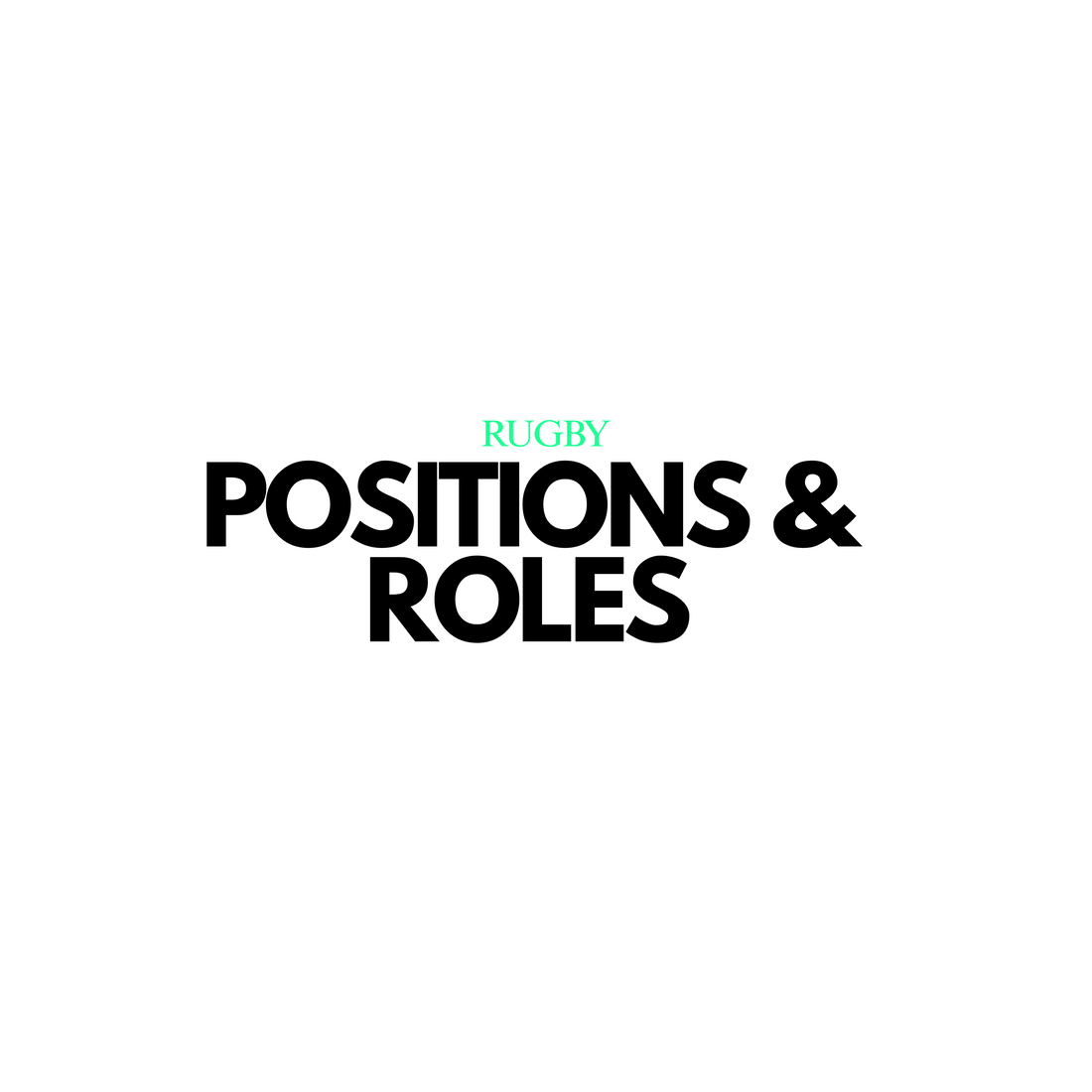
Rugby: Positions and Roles
Share
Rugby players are divided into two main groups: Forwards and Backs. Each group has specific roles and responsibilities on the field.
________________________________________________________________________________________________
Forwards vs. Backs: The Distinction
Forwards:
Primary Role: Forwards are typically the larger, stronger players, responsible for gaining possession of the ball and securing set pieces (like scrums and lineouts). They are involved in physical contests, including rucks and mauls, and are expected to provide the team with a solid platform for attacking or defending.
Key Characteristics: Power, strength, and stamina are crucial attributes for forwards, as they engage in heavy physical contact throughout the game.
Backs:
Primary Role: Backs are usually faster and more agile players, responsible for running with the ball, making line breaks, and scoring tries. They often operate with more space on the field and rely on tactical kicking and passing to move the ball forward.
Key Characteristics: Speed, agility, and skillful ball handling are important for backs. They are also responsible for defending against the opposition’s attacking moves.
________________________________________________________________________________________________
Key Positions in Rugby
Forwards:
Prop (Loosehead and Tighthead)
Role: Props are the primary players in the scrum. They provide stability and power in scrums and support in mauls and rucks. The Loosehead Prop (left side) and Tighthead Prop (right side) have slightly different roles in the scrum, but both are key to its success.
Key Attributes: Strength, endurance, and technique in the scrum are vital.
Hooker
Role: The hooker is the player at the center of the front row of the scrum. Their primary role in the scrum is to "hook" the ball with their foot to win possession. The hooker is also responsible for throwing the ball in during lineouts.
Key Attributes: Strength, agility, and precision in lineouts.
Lock (Second Row)
Role: Locks are the tall, strong players who provide power in the scrum and jump in the lineouts. They are often involved in rucks and mauls and play a significant role in securing ball possession.
Key Attributes: Height for lineout jumping, strength, and endurance.
Flanker (Blindside and Openside)
Role: Flankers are dynamic players who are involved in almost every aspect of the game, from tackling to carrying the ball. The Openside Flanker focuses on contesting the ball at rucks, while the Blindside Flanker provides additional power and support in scrums and mauls.
Key Attributes: Speed, tackling ability, and work rate.
Number 8
Role: The Number 8 is positioned at the back of the scrum. They control the ball at the base of the scrum and are often the link between the forwards and the backs. They also carry the ball and make powerful runs, especially in open play.
Key Attributes: Strong ball carrier, excellent in the scrum, and tactical awareness.
________________________________________________________________________________________________
Backs:
Scrum-half (Half-back)
Role: The scrum-half links the forwards and backs. They retrieve the ball from scrums, rucks, and lineouts and pass it quickly to the fly-half or other backs. The scrum-half must have quick decision-making skills and a strong passing game.
Key Attributes: Speed, agility, passing accuracy, and vision.
Fly-half (First Five-Eighth)
Role: The fly-half is often the team’s playmaker, responsible for directing the attack. They receive passes from the scrum-half and decide whether to pass, kick, or run with the ball. The fly-half typically has a strong kicking game for both field goals and tactical kicks.
Key Attributes: Tactical kicking, vision, leadership, and playmaking.
Wing
Role: Wings are the fast players on the outer edges of the backline, often responsible for finishing attacks and scoring tries. They need to be able to sprint down the touchline, evade defenders, and finish scoring opportunities.
Key Attributes: Speed, agility, and finishing ability.
Center (Inside and Outside)
Role: The centers are the backbone of the backline. They work together to break through the defense with powerful runs and clever passing. The inside center (12) usually focuses on hard running and tackling, while the outside center (13) is typically more about creating space and making breaks.
Key Attributes: Strong running, passing, and defensive capabilities.
Fullback
Role: The fullback is the last line of defense and is responsible for fielding kicks, organizing the backline’s defense, and counter-attacking with speed. The fullback is often involved in kick returns and can also play a key role in attacking moves.
Key Attributes: Speed, defensive skills, and a strong kicking game.
________________________________________________________________________________________________
Role of the Captain and Vice-Captain
Captain:
Leadership: The captain is the team’s leader on the field. They are responsible for motivating the team, making key tactical decisions, and interacting with the referee on behalf of the team. The captain is often the player who leads by example, both in terms of skill and work ethic.
Key Responsibilities: Representing the team during discussions with the referee, making decisions on tactical elements (such as whether to kick for goal or kick for touch), and ensuring discipline and team cohesion.
Vice-Captain:
Support Role: The vice-captain assists the captain in leadership duties and can step into the captain’s role if they are unavailable (e.g., due to injury or a card). The vice-captain is typically a senior player who can provide additional support and leadership.
Key Responsibilities: Helping with on-field communication and stepping in as a leader when needed.
________________________________________________________________________________________________
Summary of Rugby Positions and Roles:
Forwards focus on the physical side of the game, winning possession, and providing a platform for attack. Key positions include Props, Hooker, Lock, Flanker, and Number 8.
Backs are responsible for attacking play, creating scoring opportunities, and defending. Key positions include Scrum-half, Fly-half, Wing, Center, and Fullback.
Captain and Vice-Captain provide leadership, motivation, and communication with the referee, guiding the team both tactically and in terms of discipline.
________________________________________________________________________________________________
These positions and roles ensure that each player contributes to the team’s overall strategy and performance, with the forwards providing the platform and the backs capitalizing on it to score.
